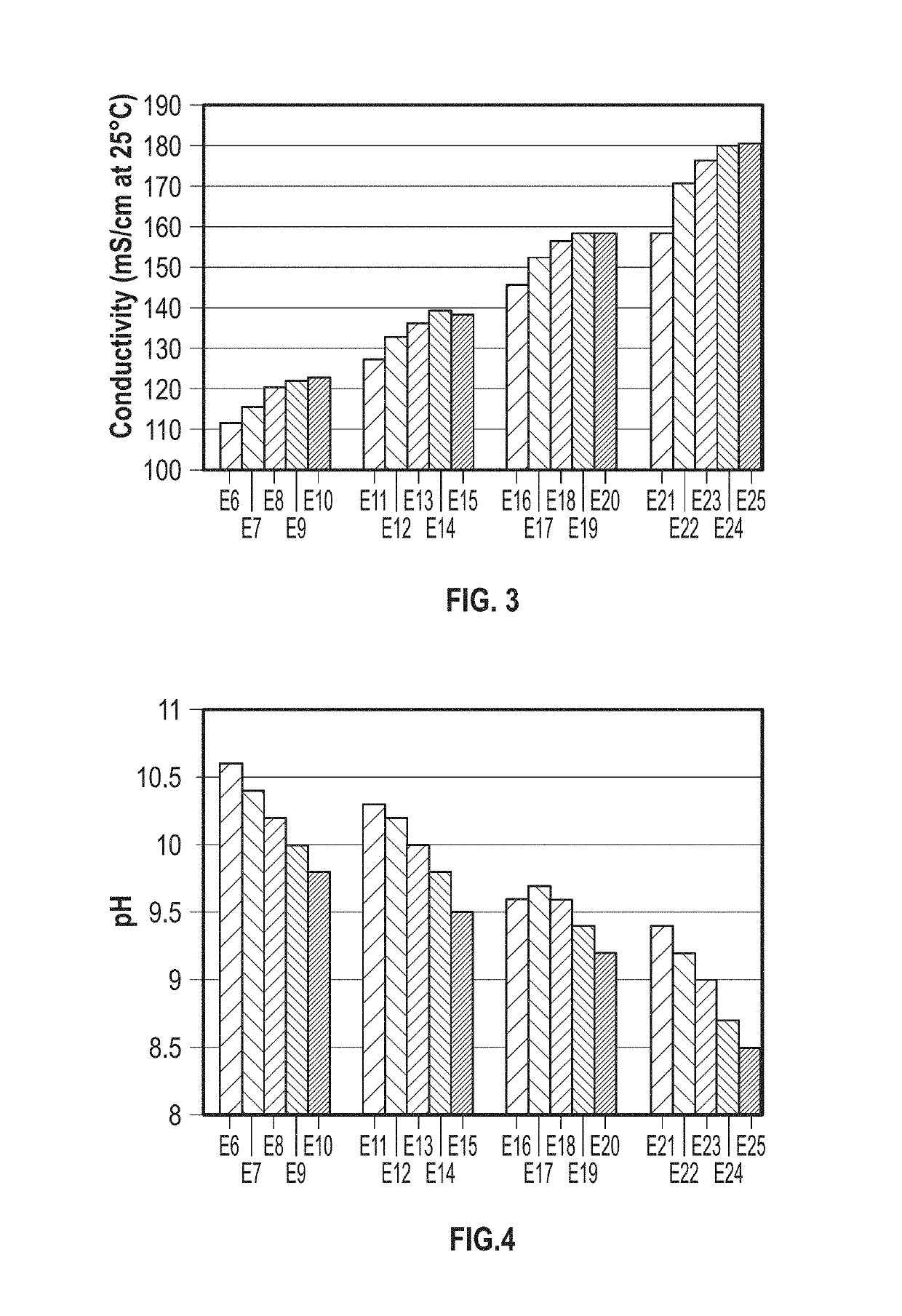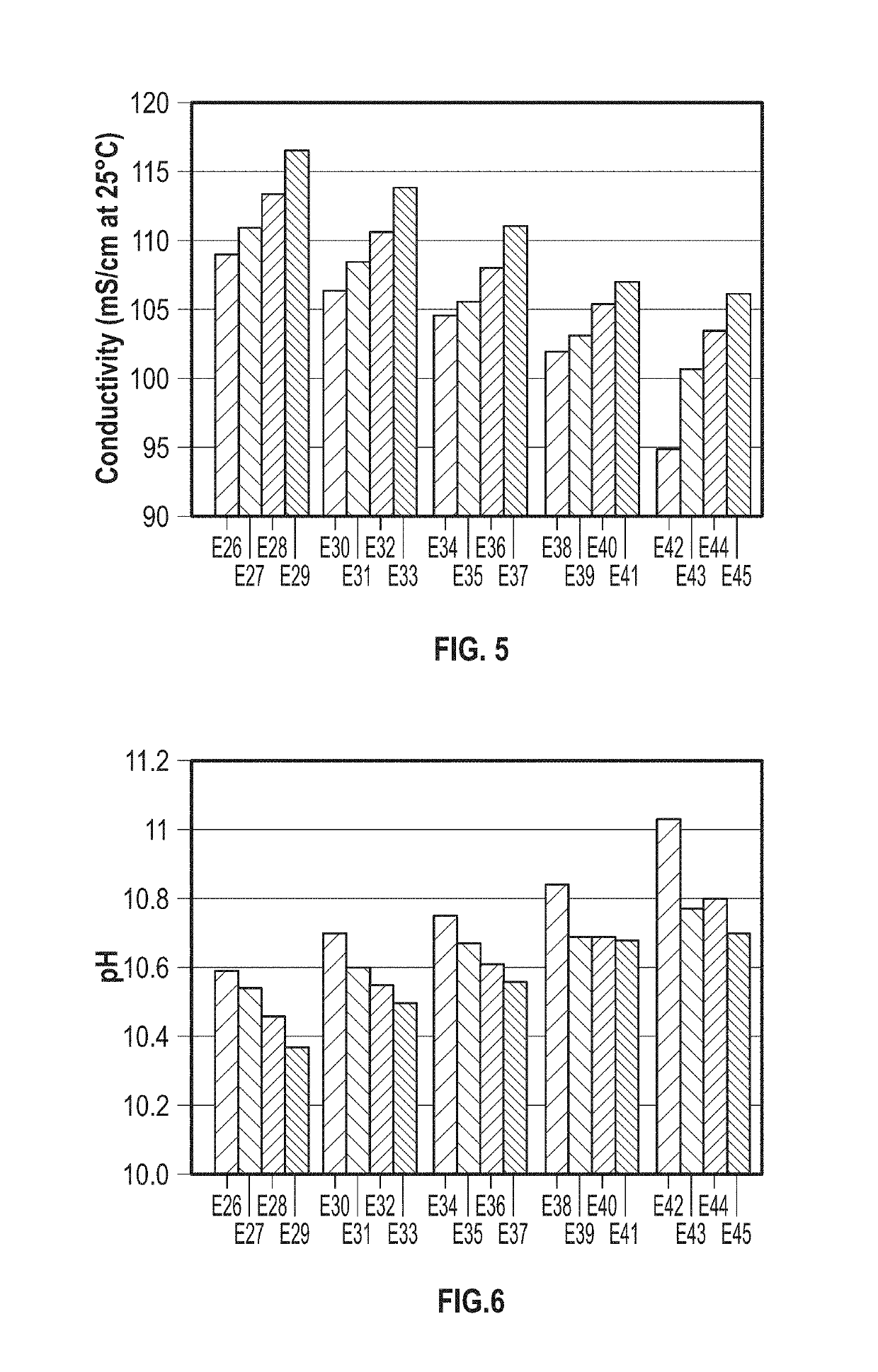Systems and methods for forming a solution of ammonium carbamate
- Summary
- Abstract
- Description
- Claims
- Application Information
AI Technical Summary
Benefits of technology
Problems solved by technology
Method used
Image
Examples
example 1
Formulations for Exemplary Speciated Solutions of Ammonium Carbamate
[0040]Prophetic Formulations for exemplary speciated solutions of ammonium carbamate may be prepared as follows. The solution of ammonia is diluted to approximately 12 wt % in a reaction vessel with cooling capabilities. Carbon dioxide is charged over time to give a final molar ratio of NH3 / CO2 of about 2. Different concentrations of ammonia and NaOH can be used, and the quantity of water adjusted accordingly. Assuming a 25 wt % ammonia solution and a 50 wt % NaOH solution, 35.96-39.38 parts of water and 34.03-35.05 parts of ammonia solution are blended at ambient temperature in a vessel. This can be done with or without cooling.
[0041]Carbon dioxide is charged into mixture such that the mole ratio of ammonia to carbon dioxide is between 2.00 and 2.06 (10.99 parts is a typical charge.) Carbon dioxide reacts with ammonia in solution to form ammonium carbamate. Charging can either occur inside the vessel, or can occur ...
example 2
Speciated Solutions of Ammonium Carbamate Exhibiting Minimal Variation of Properties Over Multiple Batches
[0044]Exemplary speciated solutions of ammonium carbamate (E1-E5) were prepared as follows. For each solution, a 12-liter jacketed glass vessel was fitted with a Mott Series 850 Porous Tube Assembly (part number 850-3 / 4-06) for sparging of carbon dioxide. The porous tube assembly has a pore size of 10 microns. Carbon dioxide was supplied by a gas cylinder, and the flow rate was controlled with a mass flow controller. 3.54 kg of 28.4 wt % aqueous ammonia solution and 4.673 kg of DI water were charged to the vessel. The reactor was sealed, except for one port that was connected to the Porous Tube Assembly and an outlet port that went to a bubbler. Carbon dioxide was sparged over a 3-hour period through the Porous Tube Assembly, with the temperature being held at about 36° C. throughout the run. After the 3-hour period, the reactor was cooled to 25° C. and 1.846 kg of 50.1 wt % sod...
example 3
ve Solution of Ammonium Carbamate Exhibiting Formation of Solids in Headspace Portion of Reactor Due to Large Bubbles of Carbon Dioxide
[0047]A comparative solution of ammonium carbamate (C1) was prepared in a 1-liter reactor in accordance with the solution of ammonium carbamate prepared in Example 1 with the exception that the pore size of the sparging element was larger, thereby forming bubbles having a smaller surface area to volume ratio (i.e., the bubbles were larger).
[0048]The larger bubbles flowed through the solution of ammonia and entered the headspace prior to being fully dissolved. As shown in FIG. 2, solids including ammonium carbamate formed on the walls of the reactor within the headspace portion. The conductivity of the comparative solution of ammonium carbamate (C1) after a 24-hour period was only 94.7 mS / cm at 25° C.
PUM
| Property | Measurement | Unit |
|---|---|---|
| Electrical conductivity | aaaaa | aaaaa |
| Fraction | aaaaa | aaaaa |
| Temperature | aaaaa | aaaaa |
Abstract
Description
Claims
Application Information
 Login to View More
Login to View More - R&D
- Intellectual Property
- Life Sciences
- Materials
- Tech Scout
- Unparalleled Data Quality
- Higher Quality Content
- 60% Fewer Hallucinations
Browse by: Latest US Patents, China's latest patents, Technical Efficacy Thesaurus, Application Domain, Technology Topic, Popular Technical Reports.
© 2025 PatSnap. All rights reserved.Legal|Privacy policy|Modern Slavery Act Transparency Statement|Sitemap|About US| Contact US: help@patsnap.com



